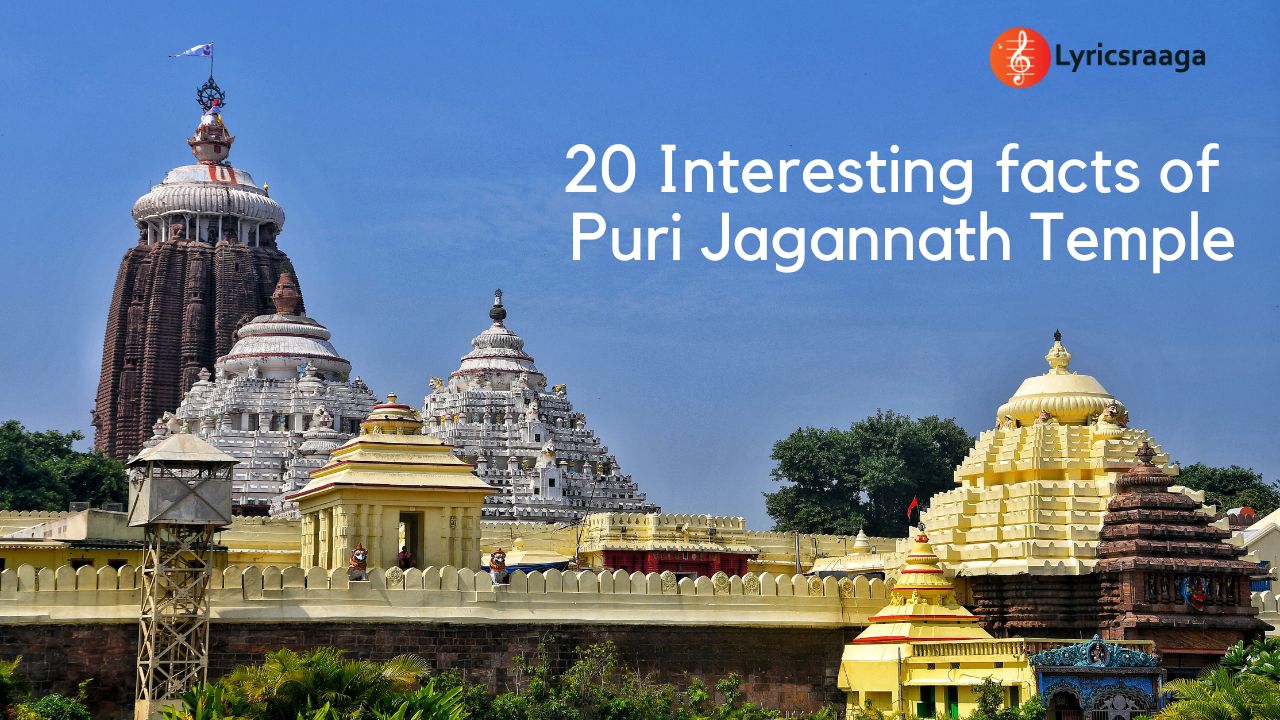20 Interesting facts of Puri Jagannath Temple
20 Interesting facts of Puri Jagannath Temple:
Puri Jagannath Temple is one of the most renowned and sacred Hindu temples located in Puri, Odisha, India.
The temple is dedicated to Lord Jagannath, an avatar of Lord Vishnu, along with his siblings, Lord Balabhadra (Balarama) and Devi Subhadra.
The temple is believed to have been constructed in the 12th century during the reign of King Anantavarman Chodaganga Deva.
The temple complex covers an area of over 400,000 square feet and is enclosed by a high fortified wall.
The main temple structure is 214 feet tall and features a unique architectural style known as Kalinga style, characterized by its pyramid-shaped tower.
The temple is famous for its annual Rath Yatra, a grand chariot festival where the deities of Lord Jagannath, Lord Balabhadra, and Devi Subhadra are carried in elaborately decorated chariots through the streets of Puri.
The temple is also known for its strict entry restrictions. Only Hindus are allowed inside the temple premises, and even they are not permitted to enter the inner sanctum.
The idols of Lord Jagannath, Lord Balabhadra, and Devi Subhadra are made of neem wood and are replaced with new ones every 12 or 19 years in a special ceremony called Naba Kalebara.
The temple kitchen, known as the Anand Bazaar, is one of the largest in the world and feeds thousands of devotees every day. The food is cooked using traditional methods and is known as Mahaprasad.
The temple complex houses numerous smaller shrines dedicated to various deities, including Lord Hanuman, Goddess Laxmi, and Lord Shiva.
The temple has four main entrance gates, known as Singhadwar (Lion Gate), Hathidwar (Elephant Gate), Vyaghradwar (Tiger Gate), and Ashwadwar (Horse Gate).
The temple is famous for its intricately carved stone sculptures and artwork depicting various mythological stories and scenes.
The flag on top of the temple is changed every day. The flag, known as Patita Pavana Bana, is made of a single piece of cloth and is considered sacred.
The temple has an underground tunnel system known as the Bhojana Mandap, which was traditionally used for the movement of the deities during the Nabakalebara ceremony.
The temple’s kitchen is said to be the largest earthen kitchen in the world. It uses traditional utensils and techniques for cooking the Mahaprasad.
The temple is an important center for the Jagannath sect of Hinduism, which emphasizes devotion and surrender to Lord Jagannath.
The temple complex also includes a large library known as the Saraswati Bhawan, which houses ancient scriptures and religious texts.
The temple’s main entrance, Singhadwar, is guarded by two stone lions known as Jay-Vijay, who are believed to be the gatekeepers of Lord Jagannath.
The temple is an architectural marvel, known for its impressive carvings, sculptures, and intricate stone work.
The Puri Jagannath Temple is considered one of the Char Dham pilgrimage sites, along with Rameshwaram, Dwarka, and Badrinath, and attracts millions of devotees from around the world every year.



